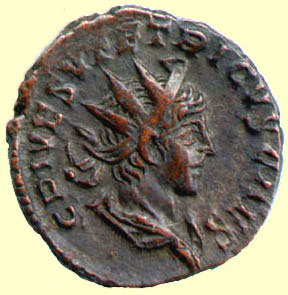 Contents -
Previous Article -
Next Article
Contents -
Previous Article -
Next Article
Abdication by Roman Emperors
To abdicate is to give up the throne in favor of another ruler. This was not a very common occurrence in Roman history. The most famous example of a Roman emperor abdicating is that of Diocletian in A. D. 305. Diocletian also forced the unwilling Maximianus to abdicate at the same time. Other not so well known Roman emperors who abdicated are Tetricus I and his son, Tetricus II. With the words "Rescue me, unconquered one, from this evil," Tetricus begged Aurelian to take over the responsibility of defending Gaul against the Germanic invaders and thus ended in A. D. 274 the Gallic Secessionist Empire established by Postumus in 259. Both Tetrici were pardoned by Aurelian after having walked in his triumph and the elder Tetricus was given a high government post in southern Italy. Finally, two very late Roman emperors were forced to abdicate. Glycerius was dethroned and forcibly made bishop of Salona by the barbarian Master General Gundobad. Similarly, Romulus Augustus, the last Roman emperor of the West, was forced to abdicate by Odovacer and sent into comfortable, though obscure retirement.
Go to next article:
Go back to previous article:
Return to Late Roman Empire Table of Contents
 Contents -
Previous Article -
Next Article
Contents -
Previous Article -
Next Article